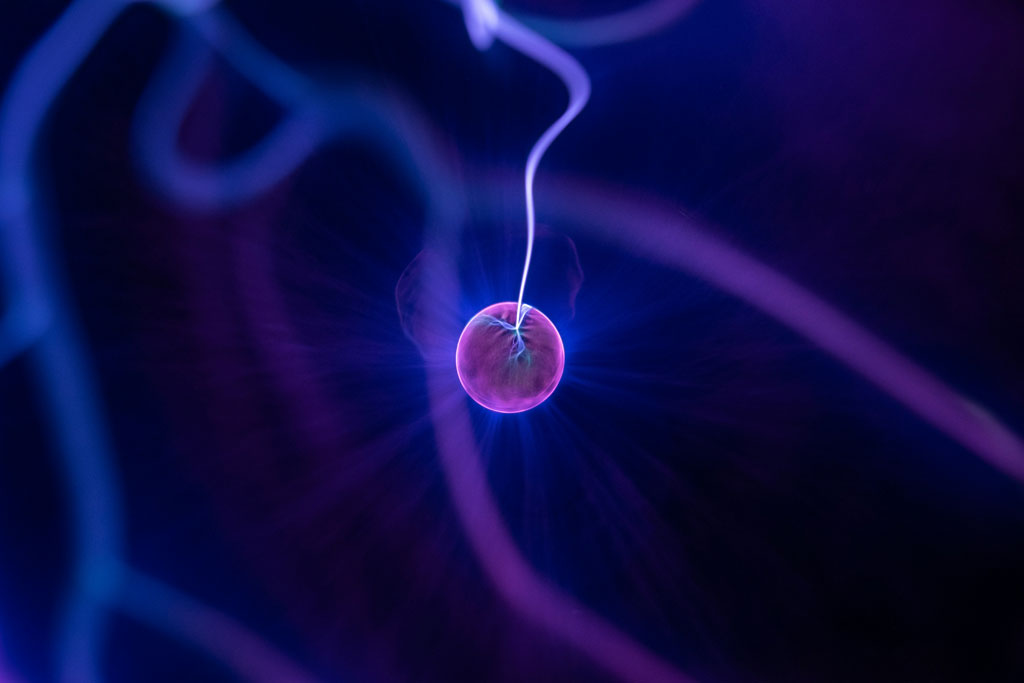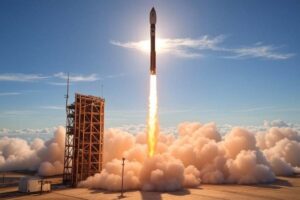Nuclear Fusion has been making headlines this year as groundbreaking advancements in AI aim to help break the previous record for megajoules of heat energy generated by a fusion reactor.
Ok great. But what is it anyway? Isn’t this the same way Oppenheimer created the atomic bomb and swept the Oscars? Not quite.
Understanding the Difference Between Nuclear Fission and Nuclear Fusion
Nuclear energy has been a significant part of the global power generation landscape for decades, primarily through the process of nuclear fission. However, in recent years, nuclear fusion has garnered significant attention as a potential future source of clean, abundant energy. While both nuclear fission and fusion are nuclear processes that release energy, they are fundamentally different in their operation, byproducts, and applications.
What is Nuclear Fission?
Nuclear fission is a process that involves the splitting of a heavy atomic nucleus into two or more lighter nuclei. This reaction is accompanied by the release of energy, neutrons, and sometimes other smaller particles. Fission is the principle behind current nuclear power plants and atomic bombs. It was discovered in 1938 by German chemists Otto Hahn and Fritz Strassmann, and it was later interpreted by Lise Meitner and Otto Robert Frisch. This discovery happened when they bombarded uranium with neutrons, leading to the splitting of the uranium nucleus into lighter elements, a process that released a significant amount of energy.
How It Works
In a typical fission reaction, a heavy nucleus like Uranium-235 or Plutonium-239 absorbs a neutron and becomes unstable. This instability causes the nucleus to split into two smaller nuclei, along with a few free neutrons and a substantial amount of energy. The free neutrons can then initiate further fission reactions, leading to a chain reaction.
Applications
Nuclear fission is primarily used for generating electricity in nuclear power plants. It is also the basis of the destructive power of atomic bombs. J. Robert Oppenheimer, often referred to as the “father of the atomic bomb,” led the Los Alamos Laboratory of the Manhattan Project from 1942 to 1945. The project culminated in the first nuclear weapons, with the Trinity test occurring on July 16, 1945, followed by the bombings of Hiroshima and Nagasaki in August 1945.
Harnessing this enormous power for practical energy generation would take almost a decade longer. The first nuclear power plant designed for commercial electricity production was the Obninsk Nuclear Power Plant in the Soviet Union. It began operation on June 27, 1954. This plant marked a significant milestone in the use of nuclear energy to generate electricity for a power grid. Over the decades, advancements in technology improved the efficiency and safety of nuclear reactors, leading to their deployment across the globe. However, incidents like the Three Mile Island, Chernobyl, and Fukushima disasters highlighted the risks associated with nuclear energy, leading to increased regulation and a focus on safety improvements. Today there are 436 nuclear reactors operating in 32 countries around the world, with the United States leading the way.
What is Nuclear Fusion?
Instead of splitting atoms, fusion combines them. It is the process where two light atomic nuclei combine to form a heavier nucleus. This is the same process that powers the sun and other stars. Fusion releases energy when two light elements, typically isotopes of Hydrogen (like Deuterium and Tritium), merge to form a heavier element, such as Helium.
How It Works
Fusion occurs when two nuclei are brought close enough for the strong nuclear force to overcome their electrostatic repulsion, fusing them together. This process results in a mass difference between the reactants and the products, which is released as energy according to Einstein’s equation, E=mc². See!? It actually does mean something!
Applications
You guessed it: Bombs. While the atomic bombs built during the Manhattan Project were based on nuclear fission, the thermonuclear hydrogen bomb used the principle of nuclear fusion. It’s easier to achieve with light elements instead of heavy uranium or plutonium, hence the hydrogen atoms. Scientists actually worried about a thermonuclear ignition of the atmosphere potentially destroying the entire planet.
So it’s good for blowing things up, but what about energy production? Currently, nuclear fusion is not used commercially due to the high temperatures and pressures required to sustain the reaction. However, it holds the promise of being a clean, virtually limitless source of energy if technical challenges can be overcome. And it looks like we’re on that path.
Key Differences
Energy Efficiency
Fusion releases significantly more energy than fission. Per unit mass, the energy released in fusion is about three to four times greater than that of fission.
Safety and Waste
Fission produces radioactive waste, which poses a significant disposal challenge. Fusion, on the other hand, produces minimal radioactive waste. Moreover, the risk of a nuclear meltdown is inherent in fission reactors, whereas fusion reactors do not have the same risk. Also, fusion produces no greenhouse gas emissions, contributing to efforts to combat climate change. Deuterium-tritium fuel is abundant. Deuterium can be extracted from seawater, making it virtually limitless, while tritium can be bred from lithium in the reactor itself. Nuclear fusion has the potential to generate four million times more energy than fossil fuels.
Fuel Availability
Fission requires heavy elements like Uranium, which are relatively scarce. Fusion uses isotopes of Hydrogen, which are abundant in water, making fusion fuel virtually inexhaustible.
Technological Maturity
Fission technology is well-developed and has been used for electricity generation since the mid-20th century. Fusion technology is still in the experimental stage, with significant scientific and engineering challenges to be overcome before it can be commercially viable.
Where are we with Nuclear Fusion Today?
Recent breakthroughs in nuclear fusion energy have sparked a wave of optimism among scientists, engineers, and environmentalists, heralding a potential paradigm shift in how humanity generates power. At a press conference in December of 2022, an announcement was made that scientists produced a nuclear fusion reaction that released more energy than it used for the first time at the Lawrence Livermore National Laboratory in California, a process called fusion ignition. This was the first step that showed real progress toward limitless clean energy.
On October 3rd, 2023, a European research team generated 69 megajoules of energy from just 0.2 milligrams of fuel, setting a new world record at the JET facility (Joint European Torus), the world’s largest and most powerful tokamak—a donut-shaped machine designed to confine hot plasma with powerful magnetic fields. However, it still required more energy to heat the plasma than the megajoules of fusion energy created.
Scientists are still facing a number of problems blocking the path to creating huge amounts of energy through fusion. The first one is sustaining and repeating ignition in fusion experiments. If they cannot consistently generate more energy than it takes to power future reactors, the whole thing is a bust. Next, these reactors need to be strong. “Center of the sun” kind of strong. The materials must withstand the enormous amounts of energy produced and not generate impurities under intense pressure. Lastly, the fuel needs to stay in one place, not cool down, and not touch the reactor walls.
In February 2024, researchers at Princeton University and the Princeton Plasma Physics Laboratory have developed an AI model that could help solve the containment problem. Its main goal is to prevent the plasma from becoming unstable and escaping the reactor. The AI model can predict tearing mode instabilities 300 milliseconds before they occur. This minuscule window is just wide enough to prevent instabilities and contain the plasma. When scientists tested the AI-generated algorithm on a real reactor in San Diego it worked! There are still a myriad of ways to disrupt plasma, and screw up a reaction, but this is a big step forward in solving the challenge.
The International Effort
Fusion research is a global endeavor, with significant projects like ITER (International Thermonuclear Experimental Reactor) in the south of France and the National Ignition Facility (NIF) in the United States pushing the boundaries of what’s possible. ITER, in particular, is designed to be the first fusion device to produce net energy gain, aiming to produce 10 times the amount of energy it consumes. Its successful operation would mark a monumental achievement in fusion research, providing valuable data for the design of commercial fusion power plants.
The Future and Challenges Ahead
As the technology advances, the timeline for when nuclear fusion might be commercially available remains uncertain. While some experts suggest it could be several decades before fusion power plants are a reality, ongoing investments in fusion research and development are accelerating progress. Private companies are also entering the fusion space, bringing new ideas and approaches to the challenge.
Beyond the technical hurdles, there are also regulatory, economic, and social considerations. The cost of building and operating fusion power plants must be competitive with other forms of energy. Public acceptance and regulatory frameworks that support the development and deployment of fusion energy will be crucial.
The recent breakthroughs in nuclear fusion energy represent a beacon of hope for a future where clean, abundant, and safe energy could power our world. While significant challenges remain, the progress made by international collaborations and the increasing interest from the private sector are promising signs. The dream of harnessing the power of the stars to light up our cities, power our industries, and drive our vehicles is closer than ever to becoming a reality, offering a potential solution to some of the most pressing environmental and energy challenges of our time.
Photo by Zoltan Tasi on Unsplash


